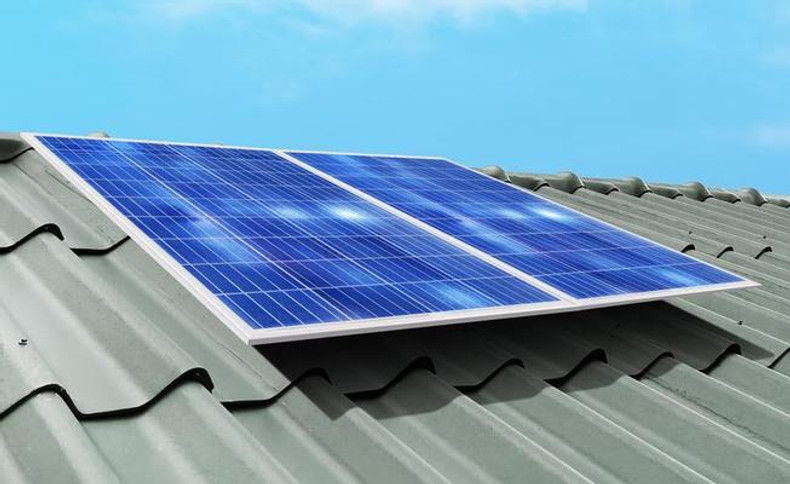In the rapidly evolving landscape of renewable energy, making the most of limited rooftop space has become crucial for urban India's solar revolution. As cities grow denser and energy demands rise, optimizing every square meter of available rooftop area for solar installation is more important than ever. This comprehensive guide explores how to maximize your rooftop's solar potential using high-efficiency panels and smart design strategies.
Understanding Solar Panel Efficiency
What is Solar Efficiency?
Solar panel efficiency refers to how effectively a panel converts sunlight into electricity. While standard panels typically offer 15-17% efficiency, today's high-efficiency panels can achieve up to 23% efficiency. This significant improvement means more power generation from the same roof area – a game-changer for space-constrained urban installations.
Modern Technology Advancements
Modern monocrystalline PERC (Passivated Emitter and Rear Cell) technology has revolutionized solar efficiency. These panels not only capture direct sunlight but also utilize reflected light, making them ideal for India's varied weather conditions. The latest bifacial panels, which can capture sunlight from both sides, offer even higher effective efficiency, potentially increasing energy yield by 5-15% compared to traditional panels.
Smart Design Strategies
Orientation and Tilt
For maximum efficiency in India, panels should typically face south with a tilt angle between 18-36 degrees, depending on your location's latitude. However, east-west configurations are becoming increasingly popular in commercial installations, allowing for more panels per roof area while maintaining good generation profiles throughout the day.
Layout Planning
Modern design software can create high-density layouts that maximize panel placement while considering:
- Structural support requirements
- Maintenance access paths
- Shadow-free zones
- Equipment placement areas
- Local building codes
Mounting Solutions
Advanced mounting systems have revolutionized installation capabilities by offering:
- Lower inter-row spacing requirements
- Better wind load management
- Reduced structural impact on roofs
- Easier maintenance access
- Optimal water drainage
Advanced Technologies
Half-Cut Cell Innovation
Half-cut cell panels, which literally split solar cells in half, reduce internal resistance and minimize power losses. These panels perform better in partially shaded conditions and offer higher power output per square meter, making them ideal for limited roof spaces.
Multi-Busbar Advancement
The latest panels featuring 9-12 busbars significantly reduce electrical resistance and increase power output. This technology allows for thinner wire usage, reducing shading and increasing the active area of each cell.
Monitoring and Maintenance
Smart Systems
Modern solar installations benefit from IoT-enabled monitoring systems that:
- Track real-time performance
- Identify underperforming areas
- Schedule predictive maintenance
- Optimize cleaning cycles
- Calculate ROI metrics
Data-Driven Performance
This data-driven approach ensures your space-optimized system maintains peak performance throughout its lifetime, maximizing your investment return.
Financial Benefits
Direct Impact
Maximizing rooftop solar potential directly impacts financial returns through:
- Higher energy generation per square meter
- Reduced payback periods
- Increased property value
- Better utilization of available subsidies
- Enhanced carbon credit potential
ROI Analysis
With current electricity rates in India averaging ₹8-10 per unit for commercial consumers, a well-designed rooftop solar system can offer payback periods as short as 3-4 years.
Regulatory Framework
Policy Updates
Recent updates to India's solar policies have made rooftop installations more attractive through:
- Simplified net metering procedures
- Enhanced subsidy structures
- Reduced approval timelines
- Better grid integration protocols
- Clearer technical standards
Practical Implementation Tips
Pre-Installation Assessment
Before proceeding with your rooftop solar installation, conducting a thorough structural assessment of your roof is essential. This comprehensive evaluation should examine the load-bearing capacity of your structure and include a detailed waterproofing inspection. Many buildings in India require significant reinforcement or waterproofing upgrades before solar installation can begin. A professional assessment team will evaluate existing utilities, electrical systems, and structural integrity to ensure your roof can support a solar installation for its entire lifetime.
Installation Best Practices
Professional installation of rooftop solar systems demands meticulous attention to detail and adherence to industry standards. High-quality anti-rust fasteners suitable for local weather conditions must be used throughout the installation process to ensure long-term durability. Proper cable management systems are crucial for preventing wire degradation and maintaining system efficiency over time. Modern installations require comprehensive lightning protection systems that comply with the latest IEC standards, protecting your investment during India's monsoon season.
Performance Optimization Strategies
Environmental Considerations
India's diverse climate presents unique challenges for solar installations. Coastal areas face corrosion risks from salt-laden air, while northern regions must contend with seasonal dust storms. Modern solar installations incorporate specialized protective features to address these environmental challenges. Anti-soiling coatings help panels maintain peak performance even in dusty conditions, while advanced glass technologies improve light capture during overcast days. Regular performance monitoring helps identify and address any environment-related efficiency drops before they significantly impact generation.
As India's leading solar module manufacturer, Waaree Indo solar a subsidiary of Waaree group stands at the forefront of high-efficiency solar technology. With state-of-the-art manufacturing. Waaree offers industry-leading efficiency rates. Their advanced monocrystalline PERC modules, equipped with multi-busbar and half-cut cell technologies, are specifically designed for Indian conditions. For those looking to maximize their rooftop solar potential, Waaree's expert team provides free site assessments and customized system designs, making the transition to solar power seamless and profitable.



